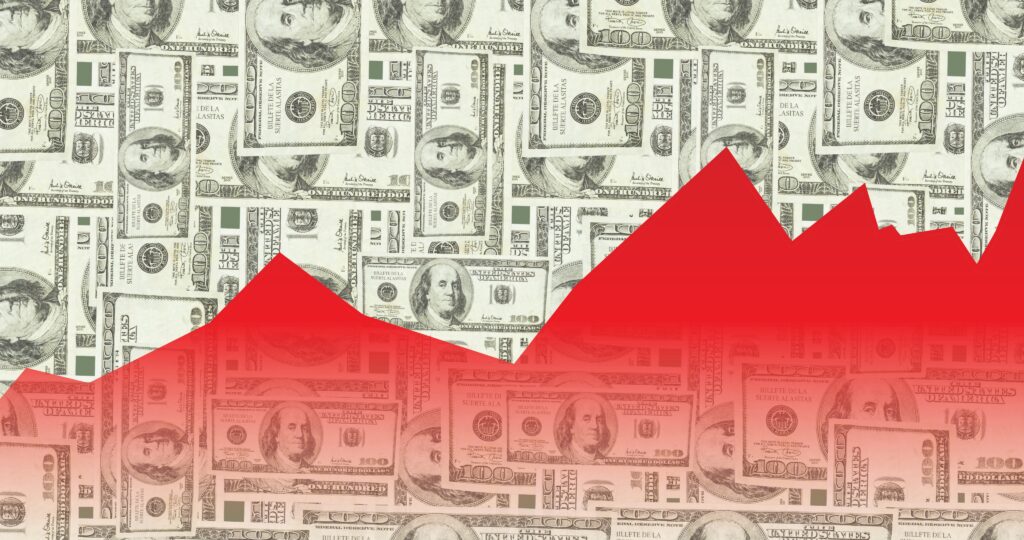In the ongoing battle against inflation, the Federal Reserve’s decision to raise interest rates as a shock to the economy and shift public perceptions was indeed a crucial step. However, as we find ourselves in the current phase of the inflation cycle, it’s time to shift our focus from discouraging investment to fostering it. We’ve made significant strides in reestablishing expectations of lower inflation on the demand side, but now is the moment to tackle inflation from the supply side. Encouraging businesses to invest in expanding production capacity is not only essential for satisfying the current demand but also for curbing inflation.

What Causes Inflation?
Inflation, the persistent increase in the general price level of goods and services in an economy, can be attributed to several interconnected factors. One of the primary causes is demand-pull inflation. This occurs when the demand for goods and services in an economy outpaces its supply. When consumers and businesses collectively increase their spending, often due to increased consumer confidence, fiscal policies, or lower interest rates, it creates upward pressure on prices. Producers may respond by raising prices to maximize profits, which contributes to inflationary pressures.
Another significant cause of inflation is cost-push inflation. This type of inflation arises from increases in the costs of production. Factors such as rising wages, higher raw material prices, or supply chain disruptions can lead to increased production costs. As businesses pass these higher costs onto consumers in the form of higher prices, it results in inflation. For example, an increase in the price of oil can raise transportation costs, affecting a wide range of goods and services.
In our current economy, inflation can be traced back to three critical inflationary causes. The first is the mandated lockdowns during the Covid-19 response around the world. The lockdowns prohibited many people from working in person, which reduced the production of goods (supply in the supply-demand dichotomy). The second is the increased unemployment benefits that were provided by many governments, which provided spending money to consumers and increased demand for goods. Additionally, the unemployment benefits increased that demand without requiring people to produce anything that adds to the supply of goods or services in the economy, exacerbating the supply-demand imbalance. The third cause is the increased government budgets, which increased the demand for goods by spending money in the economy. Additionally, most governments did not produce any goods or services to increase the supply side of the economy, which further imbalanced supply and demand.
Who Is Hurt Most by Inflation?
Inflation poses multiple challenges for working-class people, affecting various aspects of their financial well-being. It erodes real wages, which makes it increasingly difficult to purchase essentials or maintain a current standard of living. As the cost of living rises with inflation, the purchasing power of a steady income diminishes, leaving people with less money to cover essential expenses like rent, groceries, gasoline, and utilities. Many working-class individuals often find themselves stretched thin during an inflationary economy, causing them to incur debt to maintain their standard of living or to cut down expenses and lower their standard of living, even while keeping a current job and a current income.
Inflation tends to hit essential goods hardest, such as food, fuel, utilities, and housing (rent or home prices) costs. This may be caused by these goods having high turnover, where the prices are constantly updated as opposed to other goods where inventory may be purchased or created by a seller long before a time of sale when prices had not yet had the full effect of high inflation. Additionally, this may be caused because consumers may have little choice other than to buy the goods no matter the price.

Why Does the Federal Reserve Raise Interest Rates To Fight Inflation?
The Federal Reserve raises interest rates as a measure to counter inflation because it has a direct impact on borrowing and spending patterns within the economy. When interest rates increase, the cost of borrowing money for consumers and businesses goes up. As a result, people are less inclined to take out loans for big purchases like homes or cars, and businesses are less likely to invest in expanding their operations. This reduction in borrowing and spending reduces the overall demand for goods and services, which, in turn, helps slow down the pace of inflation.
Moreover, higher interest rates make saving more attractive. As the returns on savings accounts and other fixed-income investments rise, individuals are incentivized to save rather than spend. This shift in behavior can further contribute to reduced consumer spending and help curb inflationary pressures.
Additionally, increasing interest rates can have an impact on inflation expectations. When the central bank raises rates to combat inflation, it sends a signal to the financial markets and the public that it is serious about maintaining price stability. This can influence expectations, as consumers and businesses may anticipate lower future inflation and adjust their pricing and wage-setting behavior accordingly.
What are the impacts of high interest rates in today’s economy?
As described above, when the Fed increases interest rates, the cost of borrowing money for businesses increases, which discourages businesses investment. Decreased business investment may limit a supply-side solution to inflation, which may have otherwise absorbed at least some of the increased demand in the economy caused by government spending, increased unemployment benefits, and increased wages.
In one example, a manufacturer may not expand production operations because the cost of borrowing to purchase machines, materials, or new facilities is too high. Businesses expect to get a positive return on any investment, but increased costs of capital exerts downward pressure on those returns and upward pressure on risk for making the investment. If the business decides that the risk is too high or the returns are too low, the business will not increase production. However, increased production would have a deflationary effect by increasing the supply of goods in the economy.
In another example, an energy producer may not invest in exploration, drilling, refining, or transportation of fuel (for example, a pipeline) based on increased borrowing costs. Investments into each of these areas take years to return a profit. That means that an investor may bear the burden of multiple years of interest before seeing a positive return on the investment. When the interest rates increase, multi-year investments become less and less profitable, causing many investors to back away from investment opportunities. When gasoline and other fuels become more expensive (for example, because of decreased investments that would have otherwise increased the supply), the cost of transporting all goods and providing electricity to power factories, homes, and computers is increased. These increased costs directly translate to increased prices across most of the economy, which increases inflation.
The Fed Should Stop Raising Interest Rates and Consider Lowering Interest Rates
While the Fed needed to raise interest rates to provide a shock to the economy that would change public perception of whether inflation would continue to run rampant, the time has come to stop discouraging investment by businesses. In this phase of the inflation cycle, we have already done the work of fighting inflation from the demand side by reestablishing the expectation of a lower inflation rate in the near future. It is now time to fight inflation from the supply side by encouraging businesses to invest in increasing production that will satisfy the current demand in the economy and bring down inflation.